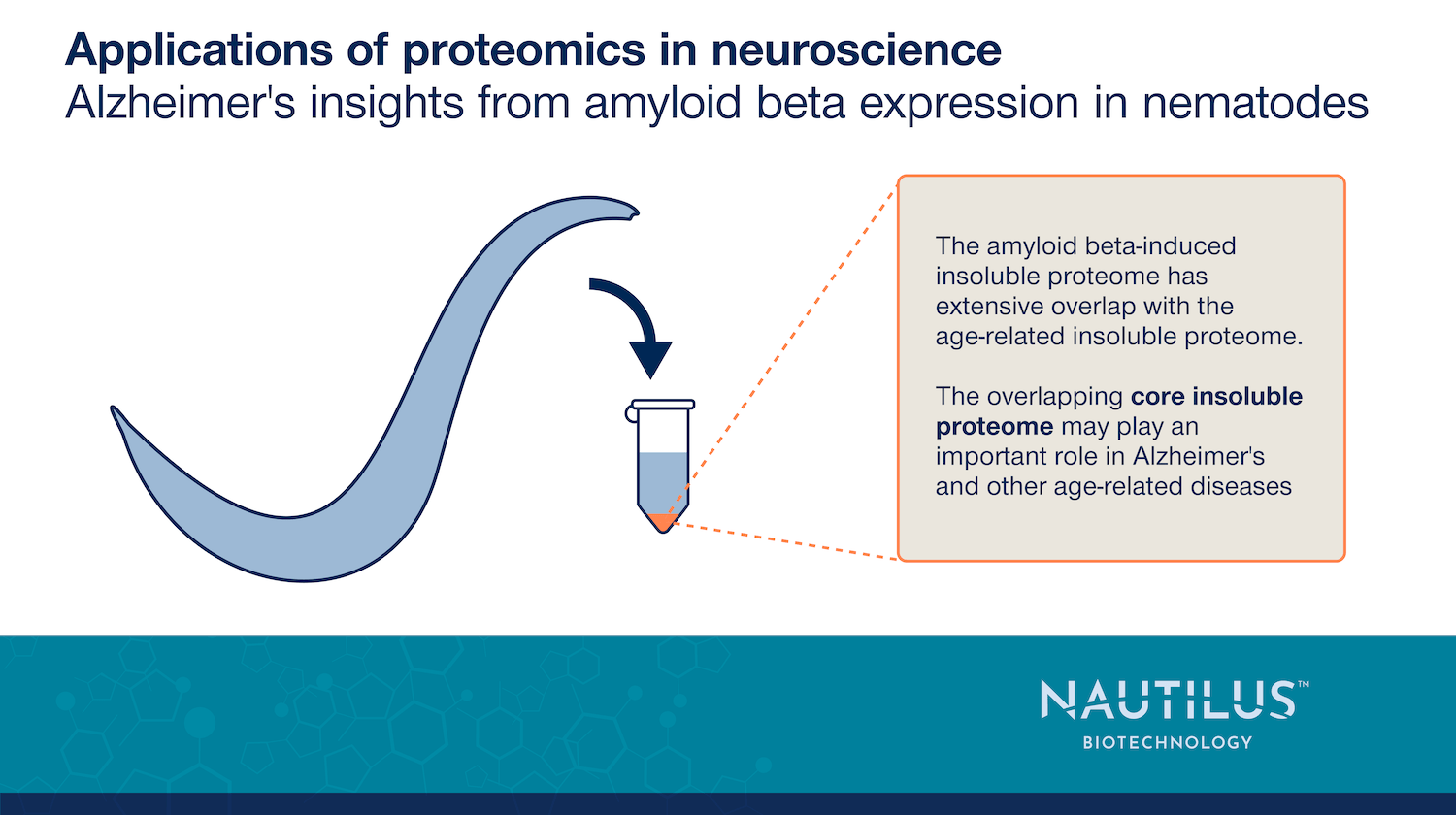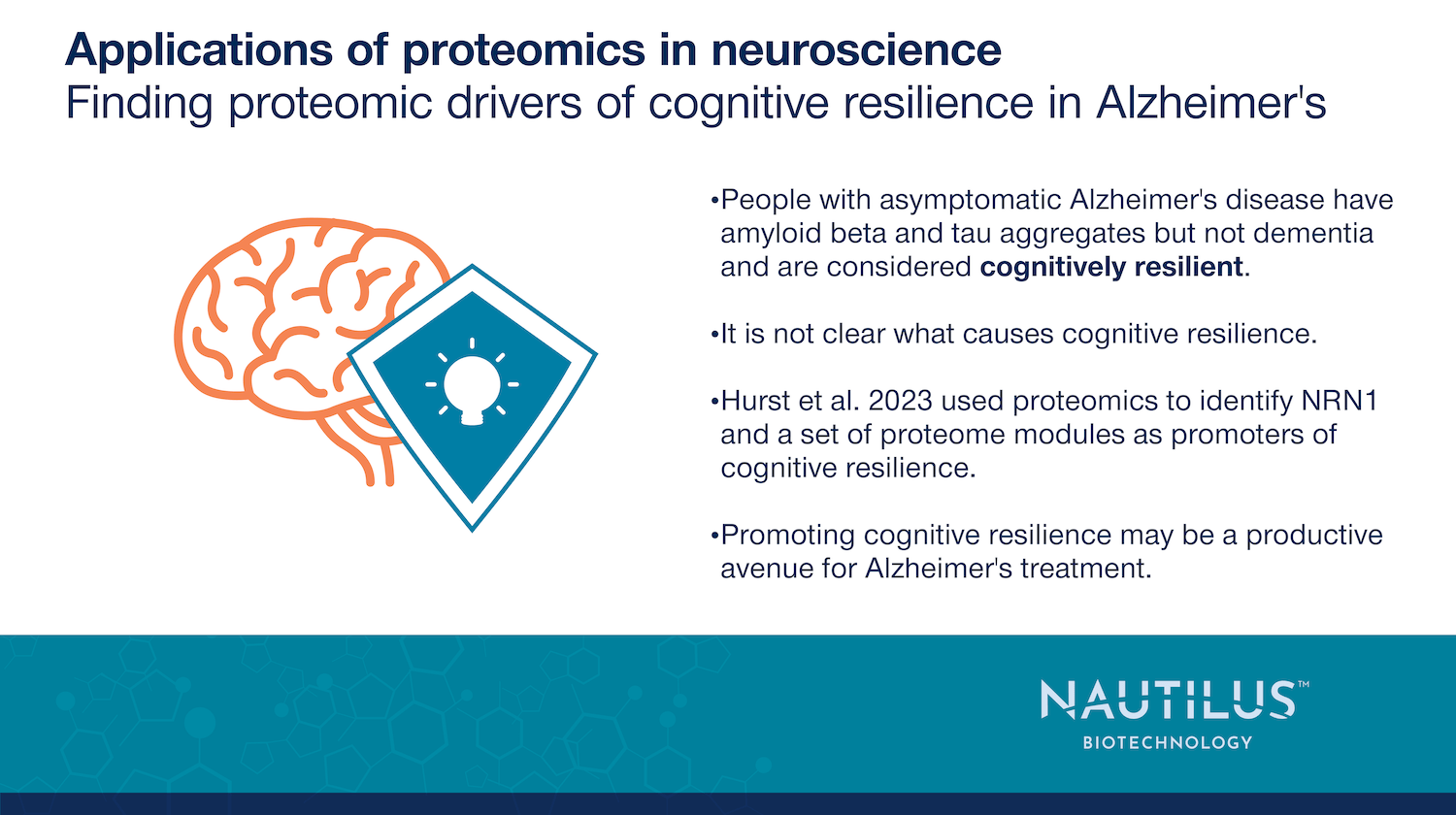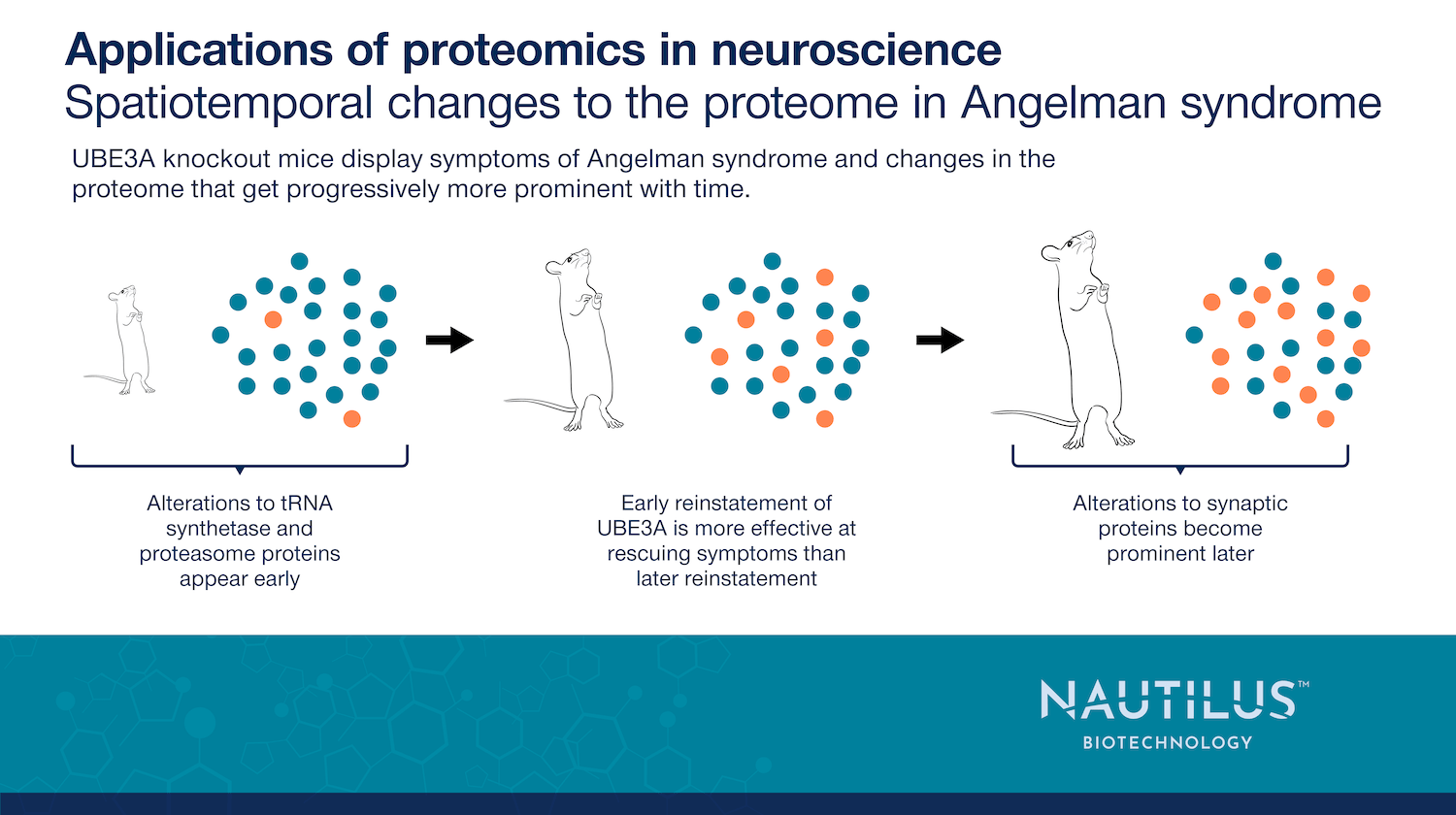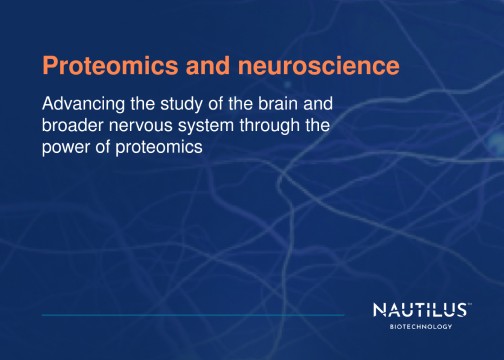
Applications of proteomics in neuroscience – Round up September 2024
Nautilus Biotechnology
September 19, 2024

Neuroscientists continue to leverage the latest proteomics technologies to advance their research in creative and impactful ways. To highlight just a small fraction of their efforts, we recently wrote new blog posts featuring their work and added them to our Proteomics and neuroscience eBook. We provide a glimpse at the new blog posts here and encourage you to download our Proteomics and neuroscience eBook to access all our applications of proteomics in neuroscience posts in one place. Below, we also share a brief synopsis of our animation covering how next-generation proteomics technologies can fuel neuroscience.
We hope you enjoy these resources, and if you have any questions about them, please reach out!
Alzheimer’s insights from amyloid beta expression in nematodes
In Alzheimer’s disease, the amyloid beta protein aggregates outside neurons and forms “amyloid plaques.” Exactly what role these plaques play in disease is unclear. To learn more about amyloid beta and its impacts on molecular physiology, Anderton et al. 2024 over-produced the protein in C. elegans, a common model organism used in neurological research. By analyzing the proteins that aggregated along with amyloid beta, Anderton et al. 2024 discovered that many of the aggregated proteins are associated with age-related disease. Read this blog post to learn how manipulating the aggregated proteins may impact Alzheimer’s and could lead to an “encompassing strategy” for treating age-related diseases.
Finding drivers of cognitive resilience in Alzheimer’s
Alzheimer’s is generally associated with dementia and the buildup of amyloid plaques and tau tangles. However, some individuals have amyloid beta and tau aggregation without dementia. These asymptomatic individuals are considered cognitively resilient and the mechanisms underlying their resilience are not clear. To begin to elucidate the molecular underpinnings of cognitive resilience, Hurst et al. 2023 employed a proteomic analysis of postmortem brain samples from people with symptomatic and asymptomatic Alzheimer’s. Check out this blog post to discover the proteins and protein modules that may be responsible for cognitive resilience.
Spatiotemporal changes to the proteome in Angelman syndrome
Angelman syndrome is a rare genetic disorder that causes developmental delays, intellectual disability, and an array of other symptoms. It is caused by mutations in the UBE3A gene, and early reinstatement of non-mutated UBE3A expression can largely rescue symptoms in mice. To determine what proteins are involved in progression of the disorder and to see how these proteins and their physiological impacts may be affected by novel treatments, Pandya et al. 2022 employed proteomic analysis of mouse, rat, and human cell line models. Learn how their findings impact our understanding of Angelman syndrome and its potential treatments in this blog post.
Updated Proteomics and neuroscience eBook
You can find these blog posts and much more in our recently updated Proteomics and neuroscience eBook. The eBook features distillations of work at the intersection of these impactful and fast-moving fields. It highlights research showcasing how proteomics can advance our understanding of the brain and broader nervous system in health and disease.
If you have a favorite example of the power of proteomics in neuroscience, please share it with us and we may include it in our next eBook update!
Unlocking the potential of proteomics to fuel neuroscience
For a quick look at many of the concepts discussed in the eBook, please watch our animation titled, “Unlocking the potential of proteomics to fuel neuroscience.” It quickly runs through a few of the many ways next-generation proteomics platforms designed to interrogate the full proteome and deeply analyze proteoforms can greatly advance neuroscience research. Give it a watch and let us know what you think in the YouTube comments.
MORE ARTICLES





